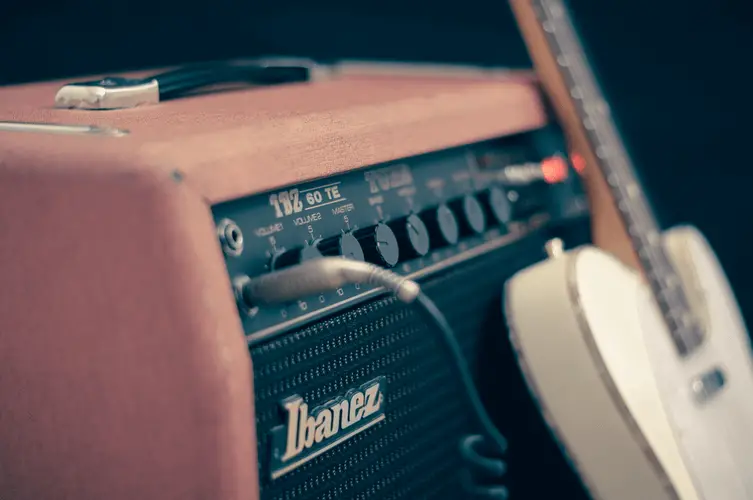As a guitarist, have you ever looked at that “gain knob” on your Marshal Amplifier or your pedals and wonder what it is? Many guitarists mistakenly identify the gain knob with its neighbor, the master volume. Or simply label it as a source for supplemental power should you need more juice in your picking. Thus, this misconception became a norm and we instinctively reach for this knob when shattering some windows is off the essence.
The failure to comprehend the very nature of this feature will adversely affect the growth of guitarists, considerably stunt it in the process. For that reason, acquiring a fair hindsight of the guitar knob can surely bring certain benefits.
What is Gain In Audio?
Those of us who favor practice over theory would crank up the knob at their own will and see the difference that makes. Those whose user manuals are still in the world of the living would contemplate whether reaching for them and research this tiny twist are worth the effort. The outcome of such deliberate tweaking to the gain knob will be a boost in your volume, or so it seems at one glance.
In the simplest term, gain determines the initial volume of the instrument before processing. Which is to say the loudness of the signal from your guitar, or the input signal, will either increase or diminish accordingly to the rotation of the gain knob. This change in volume in no way alters the effects applied to the signal by the amplifier, such as reverb effects or delay effects.
Implementations of the gain knob allows guitar players to add textures and color to their sound. Guitar distortion can also be achieved by the use of gain. By applying as much gain to the signal as possible, guitar players can overload the signal, creating an effect similar to overdrive or distortion. This implementation is usually executed through the use of an overdrive pedal, which allows additional gain to signal, in tandem with the gain produced by the amplifier. This combination introduces an obscene amount of boost in gain, the prerequisite for distortion effects.
Difference between gain and volume
Because the gain option introduces a few additional decibels to the signal, many guitar players has concluded the fact that gain is just volume in a fancier name. This is a manifest misapprehension of the concepts for both volume and gain.
While gain is an option that allows you to modify your sound before further effects can occur, volume alters the final production, determining the volume of the signal and the effects applied. In essence, volume (or master volume) is the loudness you will hear coming out of the amplifier.
Volume also plays a role in creating distortion to the signal. By increasing the gain while lowering the intensity of the overall volume, players can cause a fluctuation in the signal. Said fluctuation will result in the sound being unclear in the process and thus prompt the creation of distortion.
Gain staging
Now that we have had a fair understanding of gain, next thing to check off the list is how to use it.
The act of setting up the levels for your amplifier and pedals is called gain staging. This is an essential step of implementing gain in in guitar signal. The gain staging process will determine how clean or distorted your signal will turn out to be while keeping unwanted noise at a minimal level.
While working towards the gain staging, one needs to pay attention to how the effects will interact with each other and the signal. Visualizing the sound of the final product is much needed to adjust each element. Experimenting with the amplifier and the pedal will give you deeper insight in utilizing these features to your advantage. Mastery of mixing these effects will guarantee the quality of the final product the speaker produces.
Your pedalboard plays an irreplaceable role in gain staging as it determines the distortion or overdrive and additional power in gain before transferring this signal to the amplifier for further adjustments. Pedal stacking, a process in which the signal is modified by multiple pedals arrive at the amplifier, demands special and attentive care. Many pedals have the tendency to fluctuate the effects produced by other pedals. However, if used correctly, a pedal can push the another and further improve the distortion level.

